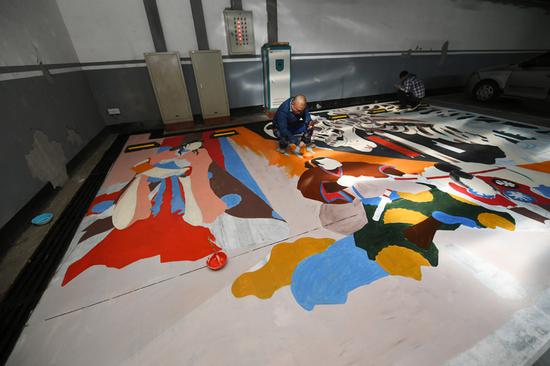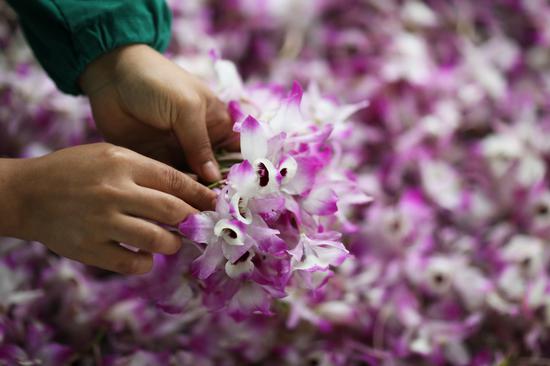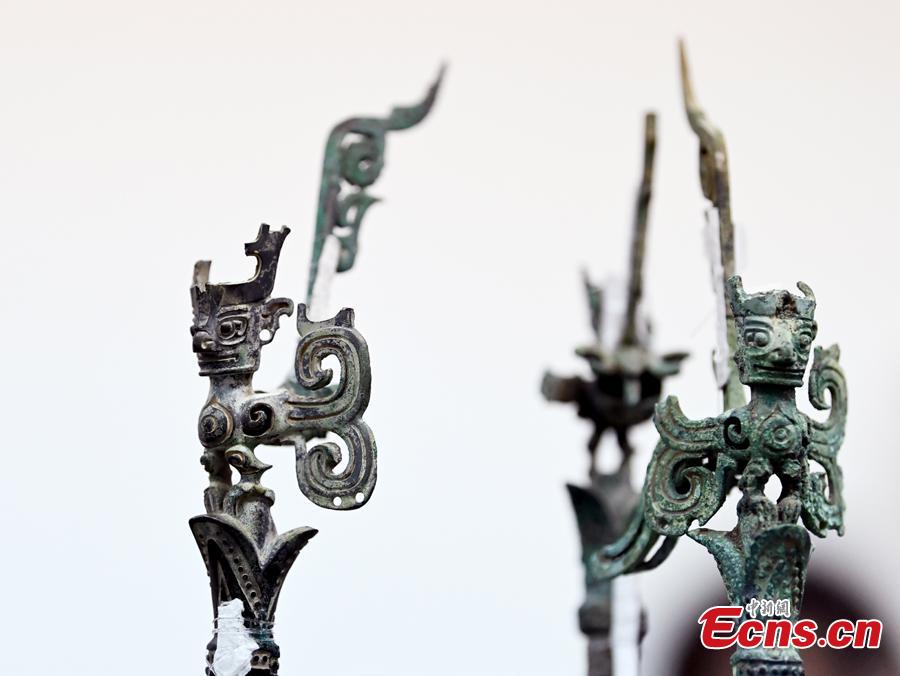
This photo taken on April 8, 2021 shows the bronze sculpture of a tree excavated in 1986 from the Sanxingdui Ruins site in Guanghan, southwest China's Sichuan Province. (Photo: China News Service/An Yuan)
Sanxingdui is believed to be a remnant of the Shu Kingdom dating back 5,000 years in the region. More than 1,000 national treasures, including gold masks, bronzeware, jade tablets, ivory pieces and a sacred tree, were unearthed in 1986 from two sacrificial pits at the ruins.
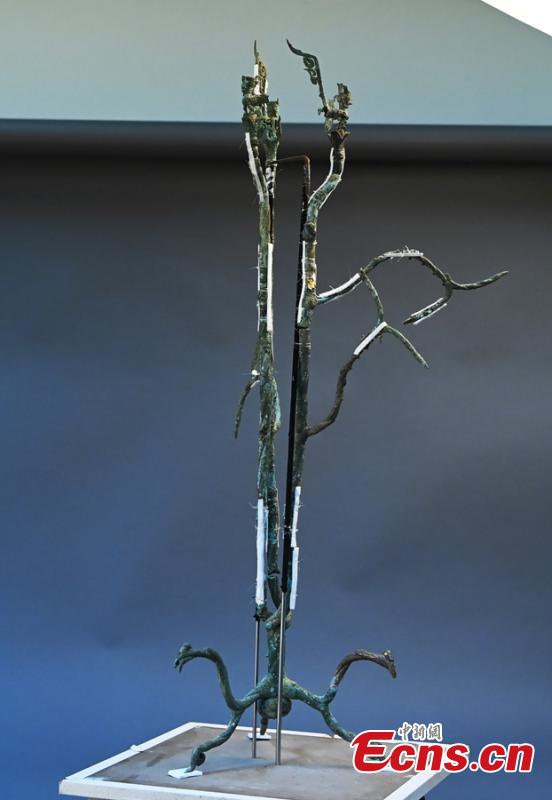
This photo taken on April 8, 2021 shows the bronze sculpture of a tree excavated in 1986 from the Sanxingdui Ruins site in Guanghan, southwest China's Sichuan Province. (Photo: China News Service/An Yuan)
Sanxingdui is believed to be a remnant of the Shu Kingdom dating back 5,000 years in the region. More than 1,000 national treasures, including gold masks, bronzeware, jade tablets, ivory pieces and a sacred tree, were unearthed in 1986 from two sacrificial pits at the ruins.
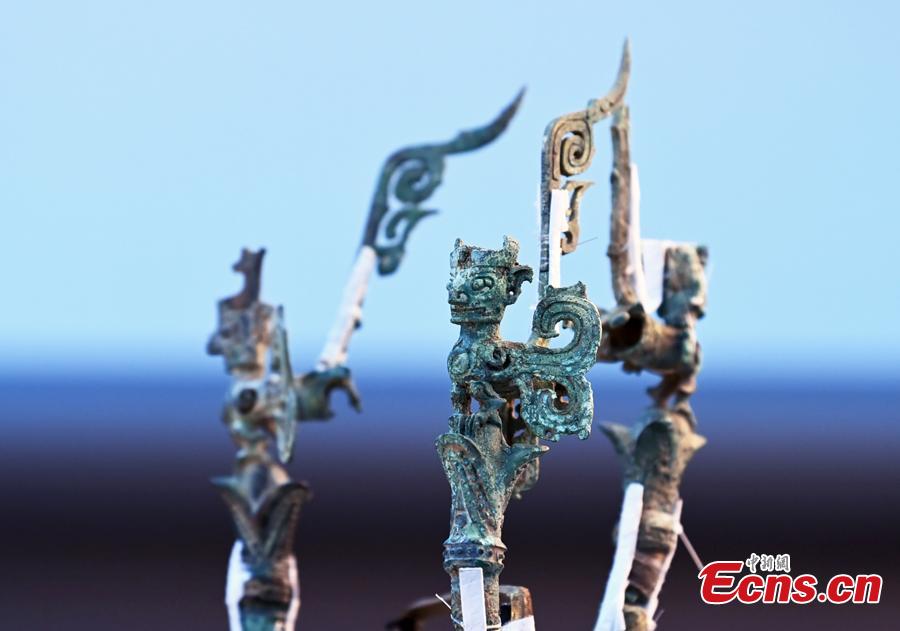
This photo taken on April 8, 2021 shows the bronze sculpture of a tree excavated in 1986 from the Sanxingdui Ruins site in Guanghan, southwest China's Sichuan Province. (Photo: China News Service/An Yuan)
Sanxingdui is believed to be a remnant of the Shu Kingdom dating back 5,000 years in the region. More than 1,000 national treasures, including gold masks, bronzeware, jade tablets, ivory pieces and a sacred tree, were unearthed in 1986 from two sacrificial pits at the ruins.
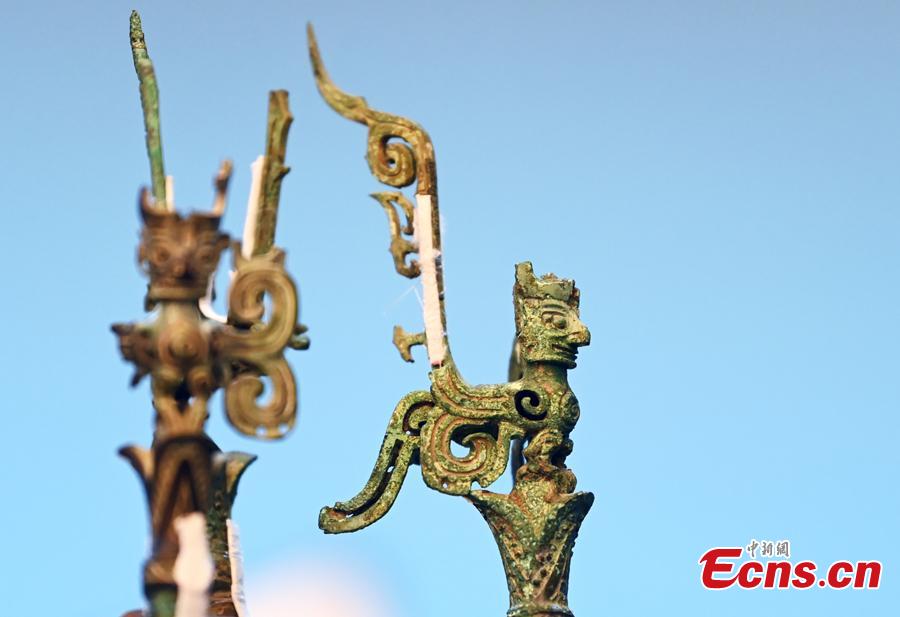
This photo taken on April 8, 2021 shows the bronze sculpture of a tree excavated in 1986 from the Sanxingdui Ruins site in Guanghan, southwest China's Sichuan Province. (Photo: China News Service/An Yuan)
Sanxingdui is believed to be a remnant of the Shu Kingdom dating back 5,000 years in the region. More than 1,000 national treasures, including gold masks, bronzeware, jade tablets, ivory pieces and a sacred tree, were unearthed in 1986 from two sacrificial pits at the ruins.
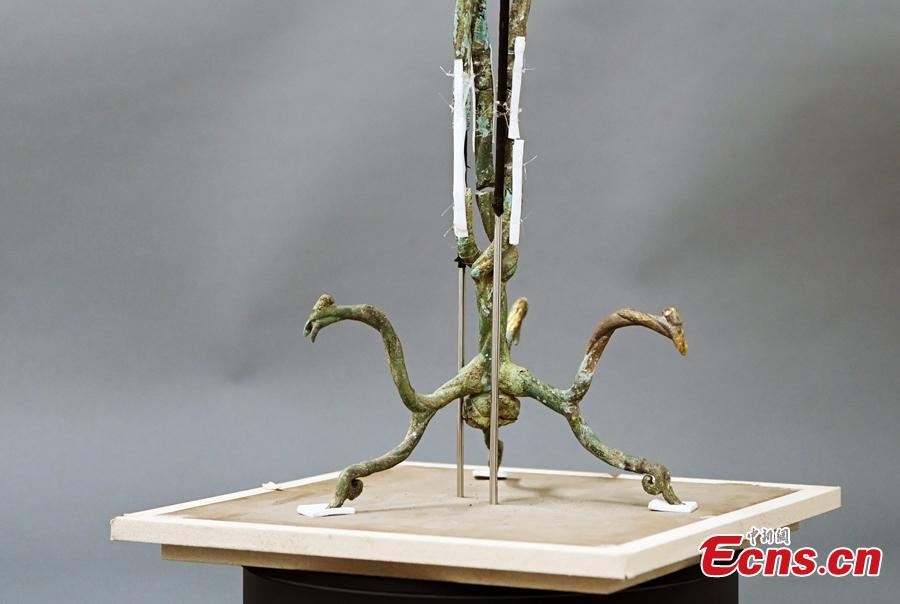
This photo taken on April 8, 2021 shows the bronze sculpture of a tree excavated in 1986 from the Sanxingdui Ruins site in Guanghan, southwest China's Sichuan Province. (Photo: China News Service/An Yuan)
Sanxingdui is believed to be a remnant of the Shu Kingdom dating back 5,000 years in the region. More than 1,000 national treasures, including gold masks, bronzeware, jade tablets, ivory pieces and a sacred tree, were unearthed in 1986 from two sacrificial pits at the ruins.
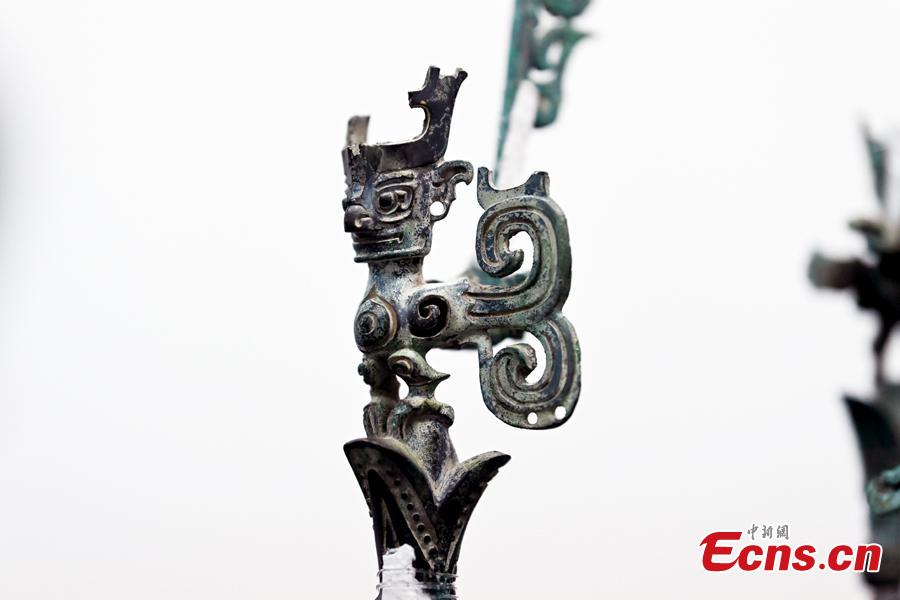
This photo taken on April 8, 2021 shows the bronze sculpture of a tree excavated in 1986 from the Sanxingdui Ruins site in Guanghan, southwest China's Sichuan Province. (Photo: China News Service/An Yuan)
Sanxingdui is believed to be a remnant of the Shu Kingdom dating back 5,000 years in the region. More than 1,000 national treasures, including gold masks, bronzeware, jade tablets, ivory pieces and a sacred tree, were unearthed in 1986 from two sacrificial pits at the ruins.

